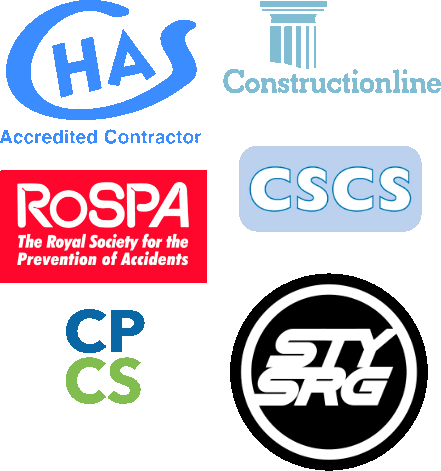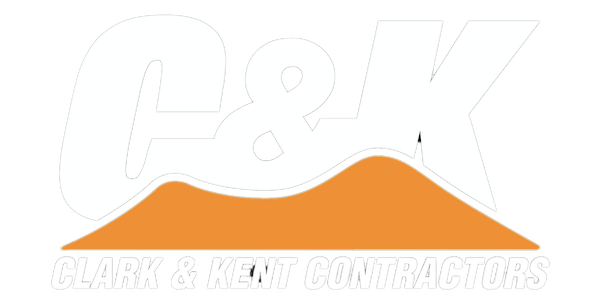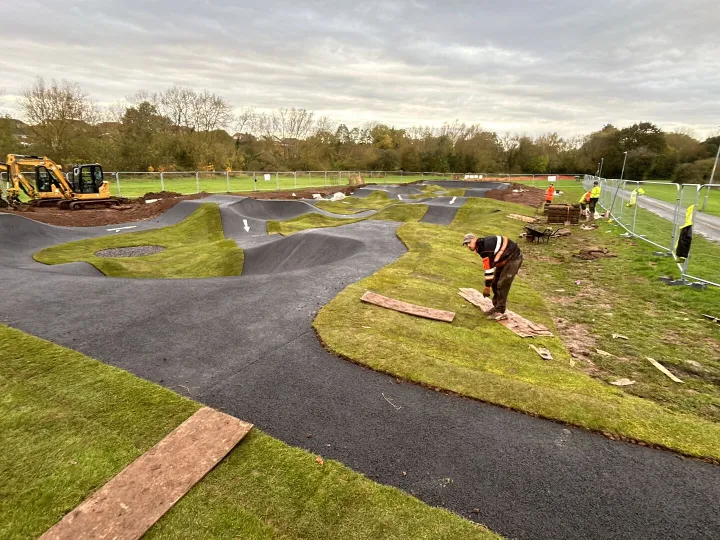Planning for a pump track build
Building a BMX pump track is a demanding but exciting project for a community. A well-built pump track is fun and challenging and can be used by BMX, mountain bike, and skateboard riders alike.
However, several key factors must be considered if the scheme is to be successful, completed within budget, and meet the needs of users and the local community.
Having clear expectations about the project's duration and the time of year the building will be completed is a good idea. Weather conditions, planning permissions and permits could all cause potential delays. This is why it is fundamental to provide realistic funding for the project, including all costs for construction, materials, labour, and permits or licenses.
The local government will often fund pump track projects with additional private sponsors, donations, and cash from other sources, such as local fundraising. The prudent will set aside extra (usually 10-15% of the budget) to cover any unforeseen costs resulting from design changes, weather delays, or the need for additional materials. It's vital to factor in longer-term maintenance costs, including resurfacing, cleaning, and future repairs. Contractors often include a maintenance clause; however, ensure it is included in the contract or factored into the overall budget. Insurance coverage for the construction and operation of the track should be provided. This could include liability insurance, compensation for contractors, and coverage for public use.
Pump track location
The first thing to consider is the scope and objectives of the pump track project. Decisions must be made about the track location, size and design to ensure it meets users' needs and is an asset to the neighbourhood. Pump tracks usually work better on relatively flat or gently sloping land. They can cover up to half an acre or about 20,000 square feet, but can also be smaller.
The size of the target audience is crucial. A simple neighbourhood track for a small number of children may need only 5,000 square feet, but a more complex layout with additional features like jumps, rhythm sections and banked berms may require much more space. The location should be easily accessible for both participants and spectators. For safety and security reasons, a pump track should be visible, so ensure it's easy to find.
Track considerations
Most pump tracks are built from dirt, and the best type of dirt is a mix of clay and sand, as it compacts well and provides a smooth, durable surface. Contractors can import dirt if necessary, but this may drive up costs. Many will prefer a stone base layer for better drainage, while an asphalt finish, though expensive at the start, can work out cheaper as maintenance costs are reduced.
Regular maintenance of the track surface is essential to ensure that it remains safe and challenging. Ensure the area chosen isn't prone to flooding, erosion, or other environmental hazards. Draining schemes can be included, but will drive up costs, so choose land that drains well naturally. Consider also how the project will impact local wildlife, ecosystems, or protected areas. Before starting construction, you may need an environmental impact assessment.
Track design and construction
A pump track should be designed to challenge experienced riders without being too tricky for beginners. It's essential to engage with local BMX riders and the community to gather input on the design and ensure the track will meet their needs. Hosting a community meeting or conducting a survey can help gauge interest and gather valuable feedback.
If the track is for children or young riders, it should be designed with their safety and skill levels in mind. The track should have long, straight sections that allow riders to build speed, banked turns or berms, and obstacles such as rollers (smooth humps), doubles (two large humps), tabletops (flat-topped jumps), and rhythm sections (a series of small humps).
The best pump tracks allow smooth transitions between rollers and berms, spaced so riders can generate speed without using pedals. The berms should be soft, flowing and wide enough for riders to lean into without losing control.
Track maintenance
Underestimating maintenance responsibilities after construction is not recommended. The contractor usually charges for post-construction maintenance services. Maintenance depends largely on track usage and the materials used for construction. Durable materials can withstand heavy use and weathering, while dirt tracks must be regularly maintained.
Consider also the track's environmental impact. If water runoff is not managed responsibly, the track might suffer erosion and environmental degradation. Future upgrades should also be considered. If the venue is very popular, you may wish to add more features or expand the track, so consider that during the planning stage.
Choosing a contractor
Hire a contractor with extensive experience building BMX or pump tracks. Ask for references or examples of previous work to assess the quality and design. The contractor should have all the necessary licenses and certifications for construction, especially if the project is in a public or regulated area.
Contractors like Clark & Kent have in-house designers who provide a clear design before starting the project. Effective communication ensures the contractor understands your needs, timelines, and budget constraints and can work collaboratively throughout the project.
An experienced contractor will ensure the track design complies with safety standards, including proper barrier installation, emergency access routes, rider safety features and clear signage with rules, safety guidelines, and directions for riders and spectators.
Before contracting for a BMX pump track, have a clear plan, formulate the design, sort the budget, and choose an experienced contractor. These are essential to creating a safe, functional, and enjoyable track. By carefully considering these factors, you can ensure the success of your pump track project while minimising risks and guarding against unexpected costs.
More on tracks
Building a pump track
Designing a pump track
DIY pump track building
For your BMX project, talk to Clark & Kent
specialist builders of BMX tracks and skateparks.
Contact Us
OFFICE
01630 672329
office@clarkkentcontractors.com
Endorsements


